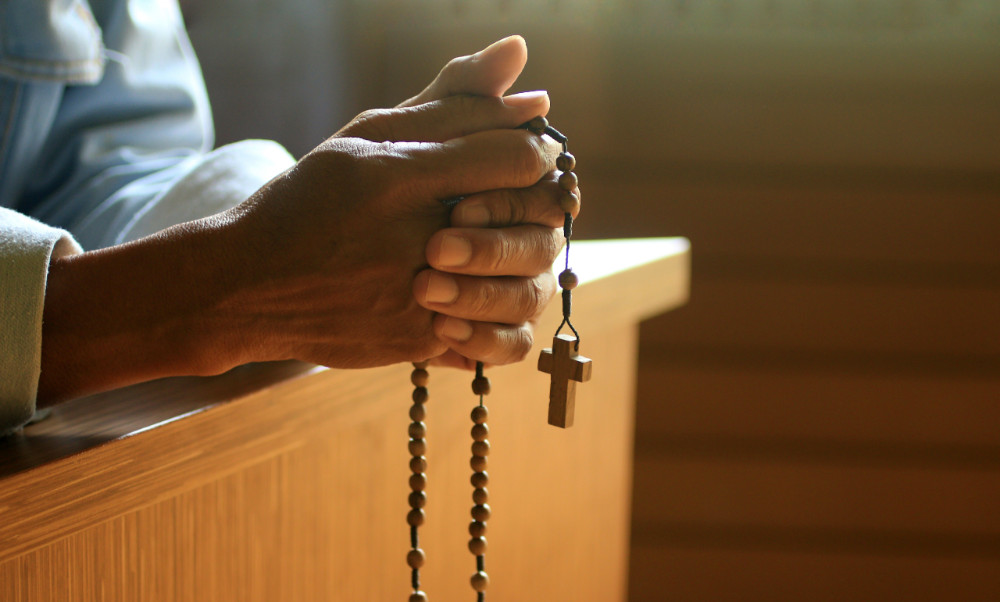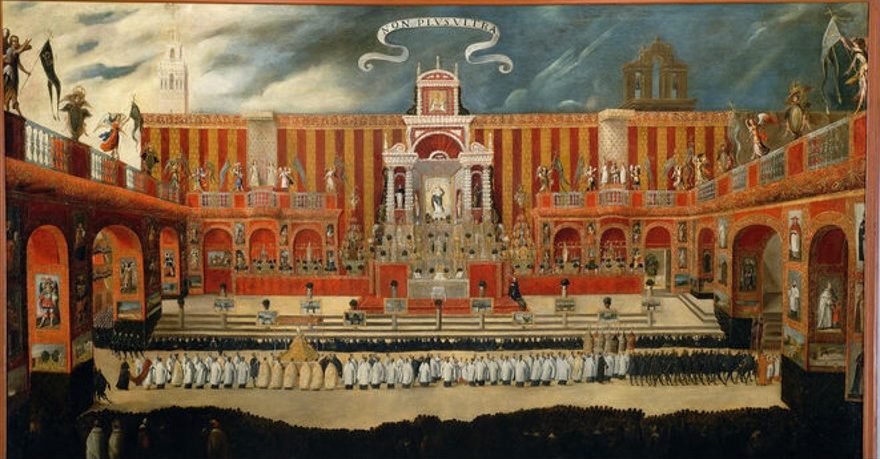
Published by Margaritas Hispánicas August 31, 2022
On August 14, on the vigil of the Assumption of Our Lady, the leftist newspaper The Atlantic published an article originally titled «How the Rosary Became an Extremist Symbol,» written by Canadian contributor Daniel Panneton, who specializes in studying the spread of hate speech through social networks.
The thesis of said article suggests that, according to Catholic doctrine, the Rosary is a weapon of spiritual warfare and is being used by extremist traditional Catholics, relating it to the use of weapons. The author states that «these armed radical traditionalists have taken up a spiritual notion that the rosary can be a weapon in the fight against evil and turned it into something dangerously literal.» To support his thesis, the author points out that some American companies promote their rosaries using the language of weapons, which, according to Panneton, would be turning the Catholic Rosary into a symbol of extremism.
The article links traditional Catholics and the concept of the Rosary as a weapon in the fight against abortion, gender ideology, and against restrictions on the right to bear arms in the United States. The author suggests this representation of the Rosary as a weapon in the «memes» of traditional Catholics would be an attempt to integrate ultra-conservative Catholicism within the extreme right. The importance of this virtual phenomenon —suggests the author— could be underestimated «but the far right’s constellations of violent, racist, and homophobic online milieus are well documented for providing a pathway to radicalization and real-world terrorist attacks.» In another paragraph of the article, he indicates that «militarism» and its relationship with masculinity in current Catholicism is linked to «wider anxieties about Catholic manhood», anxieties that in traditional Catholic men turn towards extremism, in the form of fantasies about violently defending their families or parishes from some marauder.
Thus, putting aside all the progressive stigmas that there are or may have been in the heads of the radical traditional Catholics —Radtrads—, the author is concerned with distinguishing the latter from the rest of Catholicism which, according to him, does not share that «dangerously literal» traditional interpretation regarding the analogy of the Rosary as a weapon. The columnist also claims that these radical Catholics are in the minority in the Church. In addition, he indicates that many US bishops support increased restrictions on the use of weapons.
It would be absurd to try to respond to each of the statements in said article, because if the reader were, as I believe, a faithful Catholic and a lover of Mary, he would find each and every one of them both laughable and outrageous. Suffice it to say that the analogy that represents the Rosary as a spiritual weapon against the enemies of God was used by the Virgin Mary herself, when in the fight against the Albigensians, she revealed her psalter to Saint Dominic. We all know the end of this story: The Albigensian heretics were dangerously converted under duress by Mary’s Rosary!
On the other hand, at the present time the Rosary is characteristic in the peaceful mobilizations of many Catholics who publicly offer their prayers to the Mother of God in order to ask for the end of abortion and the defense of the family. Could this be the reason for the hatred on the left for the Marian Psalter?
I would now like to turn the reader’s attention to the consequences that could happen due to this publication in the US, where violent expressions of anti-Catholicism are on the rise. Has the author thought about the consequences that his article could have against a sector of society that is already under attack?
Demonization as a precedent for religious violence
Throughout history, religious persecution and violence against a certain group in society have necessarily been initiated by a phase of demonization and by the representation of the members of the group in question as dangerous. In the context of social violence against a certain group, this demonization of said group serves as psychological support to justify violent attacks against them. As Smith indicates in his article Paradoxes of Dehumanization, human beings, by nature, hate to exercise violence against others, and experience inhibitions while exercising it. Demonizing and/or dehumanizing language then serves as a disinhibitor, justifying the violence exerted as necessary.
In a progressive North America, where Canada saw anti-Catholic violence rise 166% between 2020 and 2021 (Canada Statistics) and the United States saw at least 162 incidents of anti-Catholic violence in 2020 (USCCB) traditional Catholics are being classified as part of the enemies that progressive society intends to eliminate, such as violent and dangerous extremists, and the Rosary as an indicative symbol of said extremism. This could well indicate the increase and justification of said violence already being exercised against the Catholic Church in general. God willing, of course, that it is more of an exaggerated speculation of this servant than a near reality.
Written by María Fernanda Sánchez, Círculo de Lectura Tradición
Translated by Alfz M. Scullin, Círculo Carlista Camino Real de Tejas



